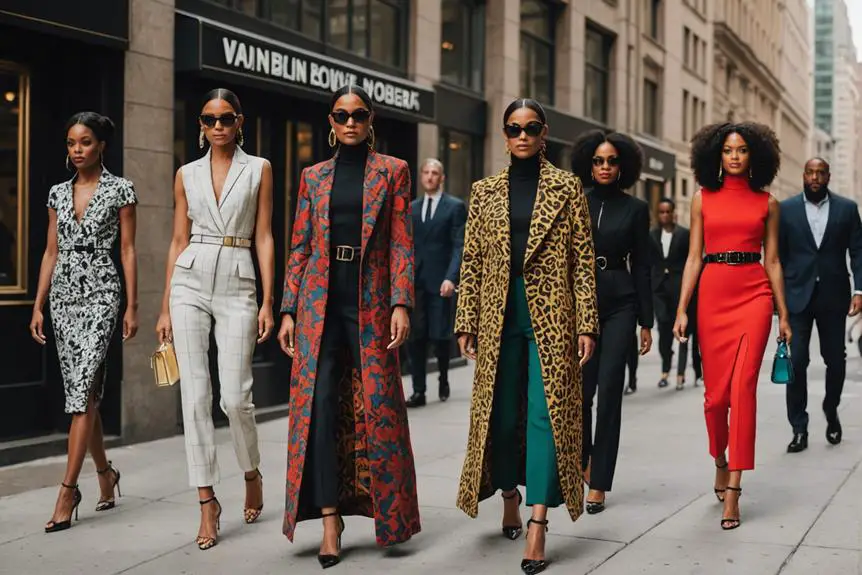In the 1930s, women's cigarette holders emerged as powerful symbols of sophistication and modernity. You see, these elegantly crafted accessories represented social liberation, reflecting a dramatic cultural shift post-suffrage. Almost 25% of women adopted smoking, viewing it as a mark of independence and defiance against restrictive norms. Holders not only elevated social status but also enhanced hygiene and style, seamlessly complementing their elaborate dresses for formal occasions. Influential figures like Audrey Hepburn reinforced their enchanting allure in media. As you explore this fascinating intersection of fashion and feminism, you'll uncover more about how these holders shaped societal perceptions and individual expression.
Cultural Significance of Holders
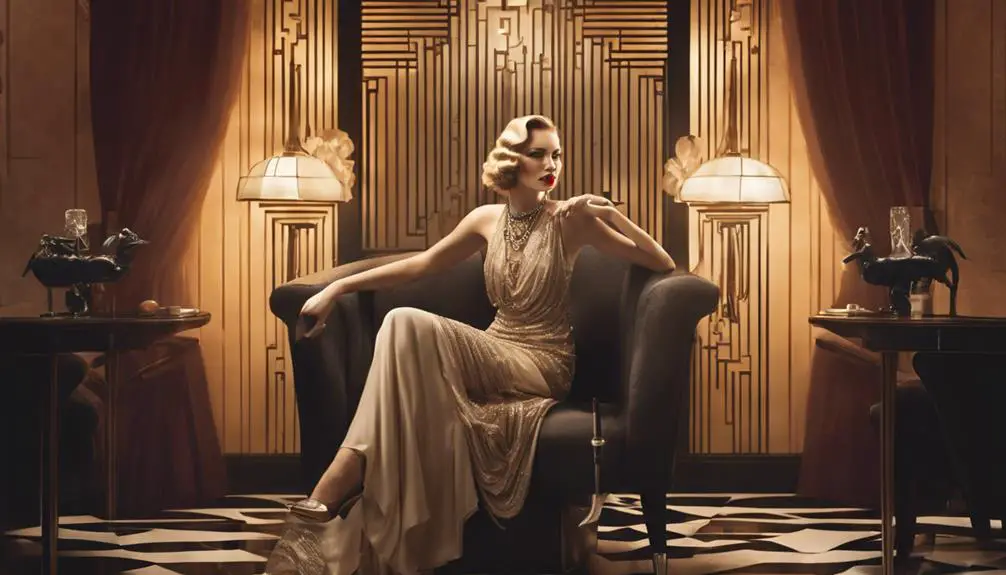
In the 1930s, women's cigarette holders often served as powerful emblems of sophistication and modernity, reflecting a significant cultural shift in societal attitudes toward female smoking. The emergence of these elegant accessories marked a pivotal moment in women's social liberation, particularly following the suffrage movement. When you see a debutante proudly flaunting her holder during the 1929 Easter Parade, it's clear that cigarette holders weren't just practical items; they were costume accessories that signified wealth and status.
Luxury brands like Cartier and Boucheron crafted holders that exuded glamour, allowing women to showcase their refined tastes. The allure of these items extended beyond function; they embodied empowerment, as Edward Bernays' marketing strategies linked smoking to chic lifestyles. Women began to embrace smoking in public spaces, a bold act of defiance against traditional norms.
The aesthetic appeal of cigarette holders—often made from exquisite materials like gold and tortoiseshell—empowered women to express their individuality while maneuvering through elite societal expectations. In this way, cigarette holders transcended mere utility, becoming symbols of modern femininity and social evolution during an exciting era.
Practical Benefits of Usage
Cigarette holders offered numerous practical benefits that enhanced the smoking experience for women in the 1930s. By using a Long Cigarette Holder, you could enjoy your cigarette without inhaling tobacco flakes, ensuring a cleaner, more enjoyable draw. This design was not just about aesthetics; it served a functional purpose. With ash falling onto clothing a significant concern—especially since smoking jackets were rare for women—these holders kept your attire pristine.
In formal settings, the elongated holders complemented elaborate dresses, aligning with social expectations of elegance. They allowed you to maintain a polished image, reducing nicotine stains on fingers and gloves. This attention to detail wasn't merely superficial; it was about hygiene and the perception of propriety in social gatherings.
Moreover, Long Cigarette Holders helped keep side-stream smoke at bay, preventing irritation to your eyes and allowing you to smoke comfortably under hats. This thoughtful design highlighted women's growing presence in public spaces, merging practicality with an emerging sense of style. Fundamentally, these holders didn't just enhance the act of smoking; they symbolized a blend of elegance and modernity that defined women's social roles during the decade.
Design and Style Variations
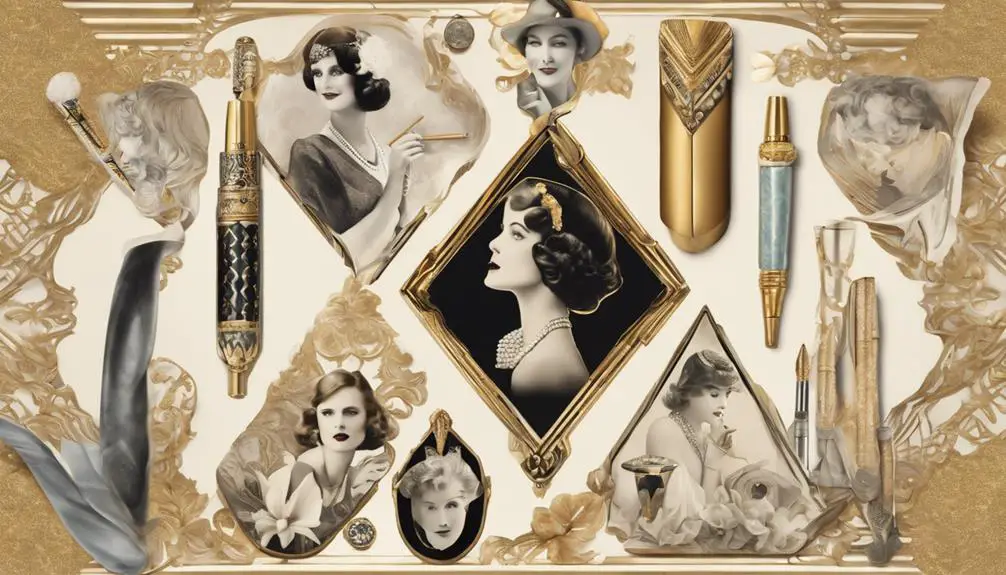
Often, women's cigarette holders in the 1930s reflected not just personal taste but also the prevailing social norms and artistic movements of the time. These accessories, often seen as costume elements, were more than mere smoking tools; they were statements of elegance and social standing.
Cigarette holders varied in length, with longer options reserved for formal occasions and shorter versions suited for casual outings. The materials used also spoke volumes about the wearer's status. High-quality options like gold and tortoiseshell contrasted sharply with more affordable plastic designs, highlighting economic disparities while aligning with trends in luxury.
Key design elements included:
- Art Deco influences: Bold geometric shapes and intricate patterns that echoed the era's artistic trends.
- Personal expression: Unique shapes and embellishments allowed women to showcase their individuality.
- Cinematic allure: Frequent appearances in films made these holders iconic, enhancing their glamorous appeal.
In this way, cigarette holders transcended their functional purpose, becoming essential accessories that captured the essence of women's fashion and societal expectations during the 1930s.
Notable Users in History
Throughout history, numerous influential women have embraced the cigarette holder, transforming it into a symbol of elegance and sophistication. This accessory has not only adorned the hands of Hollywood icons but also shaped cultural perceptions of femininity and status. For instance, Audrey Hepburn's portrayal in "Breakfast at Tiffany's" exemplifies how the cigarette holder can elevate a costume to an iconic status, much like the lavish parties depicted in "The Great Gatsby."
| Notable User | Era | Impact on Culture |
|---|---|---|
| Audrey Hepburn | 1960s | Redefined elegance in film |
| Lucille Ball | 1950s | Merged humor with sophistication |
| Jacqueline Kennedy | 1960s | Symbol of First Lady style |
| Rita Hayworth | 1940s | Embodied glamorous Hollywood imagery |
These women didn't just smoke; they made a statement. For Jayne Mansfield, the cigarette holder reinforced her image as a 1950s glamour queen, while Scarlett Johansson continues to evoke its allure in modern cinema. Each notable user of the cigarette holder contributed to an evolving narrative of femininity, merging style with social commentary.
Materials and Aesthetics
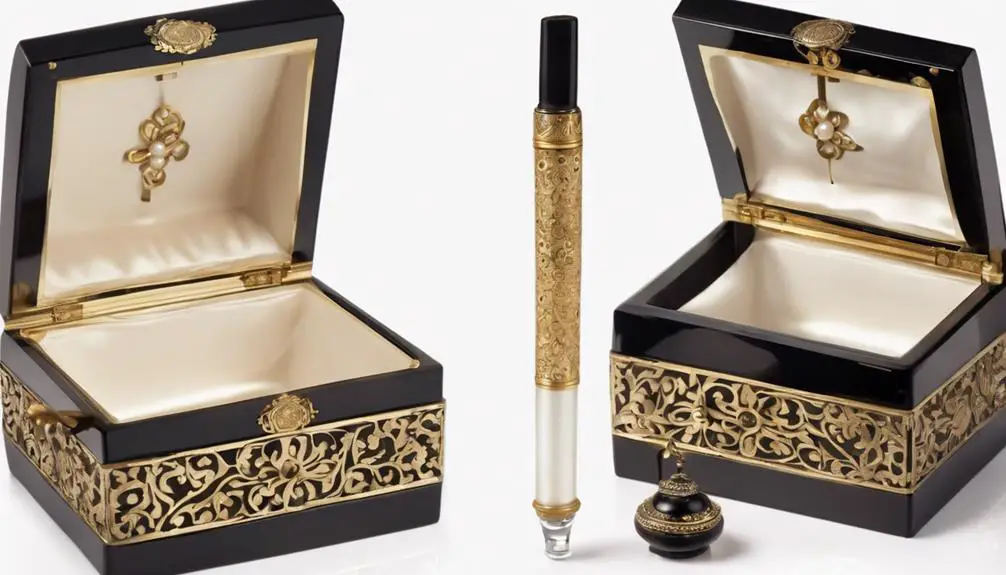
In the 1930s, women's cigarette holders emerged as not just practical tools but as powerful symbols of elegance and individuality, reflecting the social dynamics of the time. Crafted from luxurious materials like gold, tortoiseshell, and enamel, these holders showcased a woman's social status while emphasizing her unique style. Influenced by Art Deco, their bold geometric shapes and intricate designs became fashionable statements.
Consider how these elements contributed to the aesthetics of the era:
- Material Variety: The choice of materials ranged from opulent to accessible, making holders suitable for both high society and everyday use.
- Design Trends: Long holders, measuring 10 to 15 inches, epitomized sophistication at formal events, while shorter versions offered a casual flair.
- Artistic Craftsmanship: Unique embellishments like gemstone inlays and engravings highlighted the artistry involved, making each piece a wearable artwork.
Even fake cigarettes used with these holders became costume props, accentuating the allure and glamour of smoking culture. Ultimately, these cigarette holders were more than accessories; they were visual representations of a woman's identity during a transformative decade.
Social Implications and Norms
Cigarette holders in the 1930s not only highlighted individual style but also mirrored significant social changes, especially regarding women's roles in public life. As women began to smoke more openly, these accessories became symbols of sophistication and modernity, representing a shift in societal norms. The marketing strategies of the time, especially those by Edward Bernays, cleverly framed smoking as a liberating act for women, encouraging them to embrace this newfound freedom in social settings.
During events like the 1929 Easter Parade, women to smoke became a statement of equality, showcasing their presence in spaces traditionally dominated by men. This cultural transformation meant that cigarette holders were considered an indispensable accessory, allowing women to maintain elegance while avoiding tobacco stains on their gloves. The variety in designs—simple to ornate—reflected personal expression and social status, making them crucial to the Jazz Age's vibrant nightlife.
Through the lens of visual culture, cigarette holders were more than mere objects; they were powerful symbols of change. They embodied a rebellion against restrictive norms, celebrating women's autonomy and redefining their roles within society. In this way, cigarette holders became a canvas for expressing newfound identities.
The Decline of Popularity
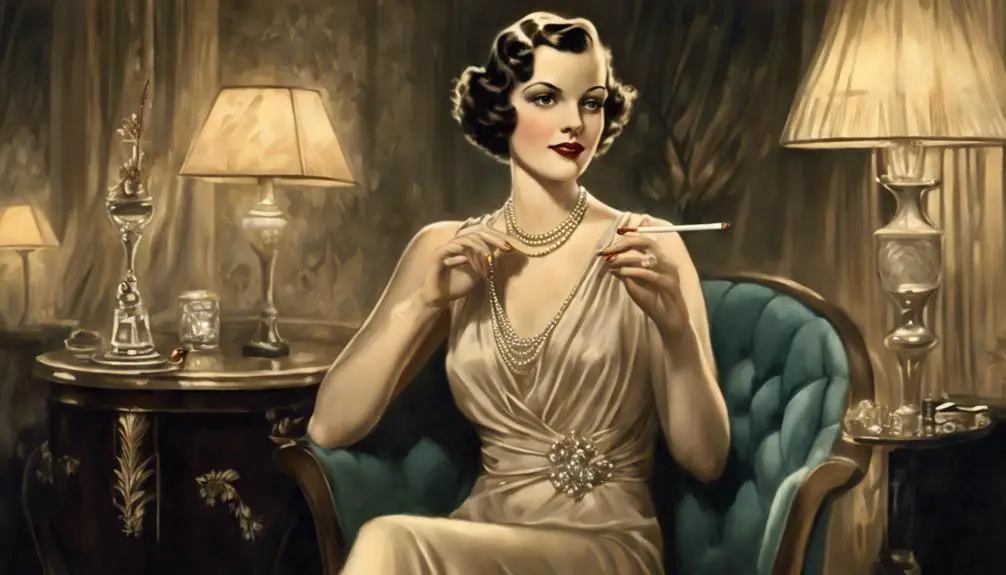
As the 1950s rolled around, a shift in both fashion and societal attitudes began to overshadow the once-coveted cigarette holder. The introduction of filtered cigarettes offered a more convenient, less messy smoking experience, leading to the decline of popularity of these elegant accessories. Women, who once embraced the sophistication of cigarette holders—often featuring ornate designs and amber mouthpieces—started to shy away from them.
The changing cultural narrative around smoking also played a pivotal role. No longer seen as a symbol of elegance and liberation, smoking began to carry a weight of health concerns and social stigma. This change was marked by:
- Fewer public sightings of women using cigarette holders.
- A decrease in production and availability in the market.
- The emergence of vintage holders as collectible items, highlighting their historical significance.
Iconic Cultural References
The allure of women's cigarette holders transcended mere fashion in the 1930s, embedding themselves into the fabric of popular culture. You can see this in iconic films where characters wielded these elegant accessories, elevating their personas. Audrey Hepburn, for instance, became the epitome of sophistication in "Breakfast at Tiffany's," with her long cigarette holder symbolizing grace and allure. In contrast, characters like Cruella de Vil from "101 Dalmatians" used the holder to embody glamorous villainy, creating a visual shorthand for cunning and style.
Television also embraced this trend, as Lucille Ball showcased a cigarette holder in "I Love Lucy," reinforcing its status as a fashionable accessory. You might even recall Rose from "Titanic," whose use of a cigarette holder encapsulated rebellion and sophistication against the backdrop of early 20th-century constraints.
Moreover, in the domain of comic books, the Penguin's frequent appearance with a cigarette holder highlighted its association with cunning and style. So, whether you're dressing up for a costume party or exploring cinematic history, these cultural references reveal how women's cigarette holders transcended their utilitarian purpose, becoming symbols of identity and narrative depth.
Frequently Asked Questions
What Was the Point of Those Long Cigarette Holders?
Those long cigarette holders let you enjoy smoking elegantly while preventing ash from soiling your clothes. They also symbolize sophistication, reflecting your personal style and social status, enhancing both the experience and the visual culture of smoking.
What Are Those Cigarette Holders Called?
You'll recognize those stylish accessories as cigarette holders. They elevate smoking into an art form, reflecting societal shifts and personal expression while embodying an era's elegance, sophistication, and the complex interplay between fashion and identity.
When Did Cigarette Holders Go Out of Fashion?
Cigarette holders started to fade from fashion in the 1950s, as societal attitudes shifted against smoking. By the 1970s, their glamour diminished, replaced by practical alternatives and a growing awareness of health risks associated with tobacco use.
Were Cigarette Holders Popular in the 1920s?
Cigarette holders were incredibly popular in the 1920s, symbolizing sophistication and modernity. You'd see them in elegant parties, reflecting a woman's independence and style, becoming essential accessories that defined the era's visual culture and social dynamics.




